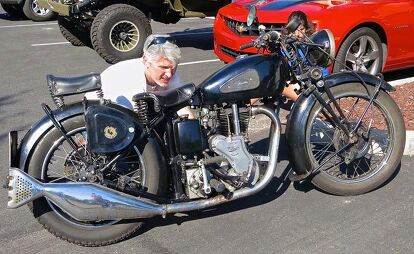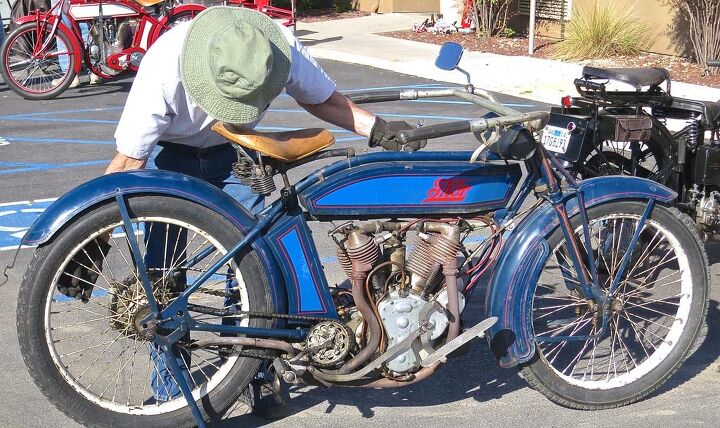Bud Ekins Memorial Ride: Geezers Gather by the River

In Memory of Steve Wright (1941-2014)
The annual Bud Ekins Memorial Ride (formerly Steve Wright’s Pre-16 Ride) rolled into Atascadero, Calif. last weekend. Sadly, Steve had died a few weeks earlier, but his pals thought it fitting to carry on in his memory.
“We need to keep it going,” said old friend Dave Bettencourt. “And we’d like to see more young folks get involved, with bikes from the ’30s and ’40s. That’s what Steve was thinking, and that guy did so much for our sport.”
Pete Young echoed the sentiment. “I’d like to get more young people excited about old bikes,” he said. “They’re so much fun, and really easy to service compared to modern bikes.”
Of course men like Ekins, Wright and now Dee Cameron can’t be replaced. But their memories and contributions will be honored so long as we can ride. Despite his British roots, Steve Wright was the quintessential all-American guy, who dug the bikes, the racing scene, the music, old movies and the California beach.
But it was his character, as well as his skills, that set him apart. Part mechanical engineer, historian, athlete and mechanic, Steve was also one of those chronically helpful people, always ready to pitch in and get ‘er done – not to mention his wicked sense of humor and a great horse laugh. For quite a few of us, it’s been hard to see him go.
(Steve’s friend and machinist Phil Schack is putting together a memorial edition of Wright’s last book, “The American Motorcycle, 1869 – 1914.” He can be reached at phil@suspensionconcepts.com).

More by Tod Rafferty



































































Comments
Join the conversation